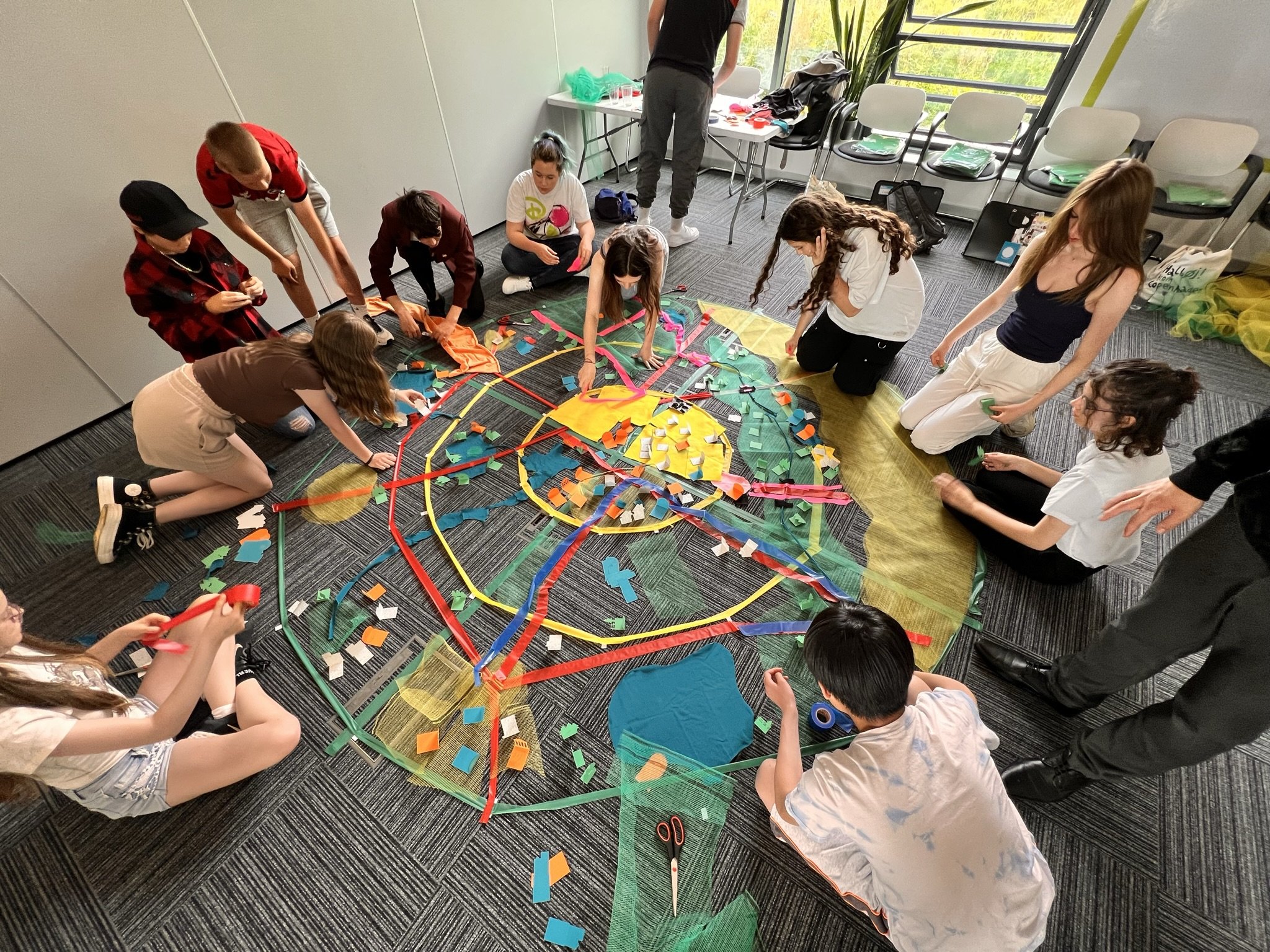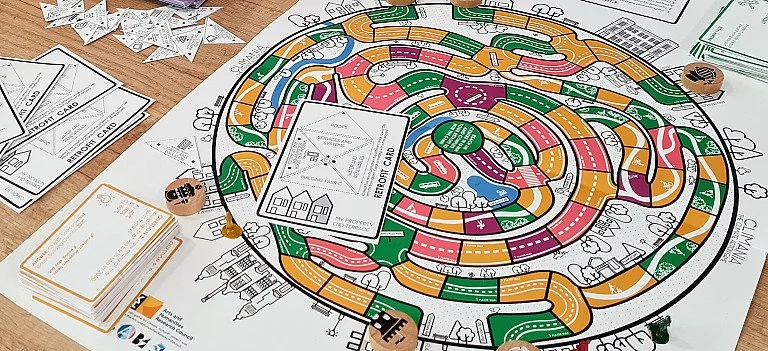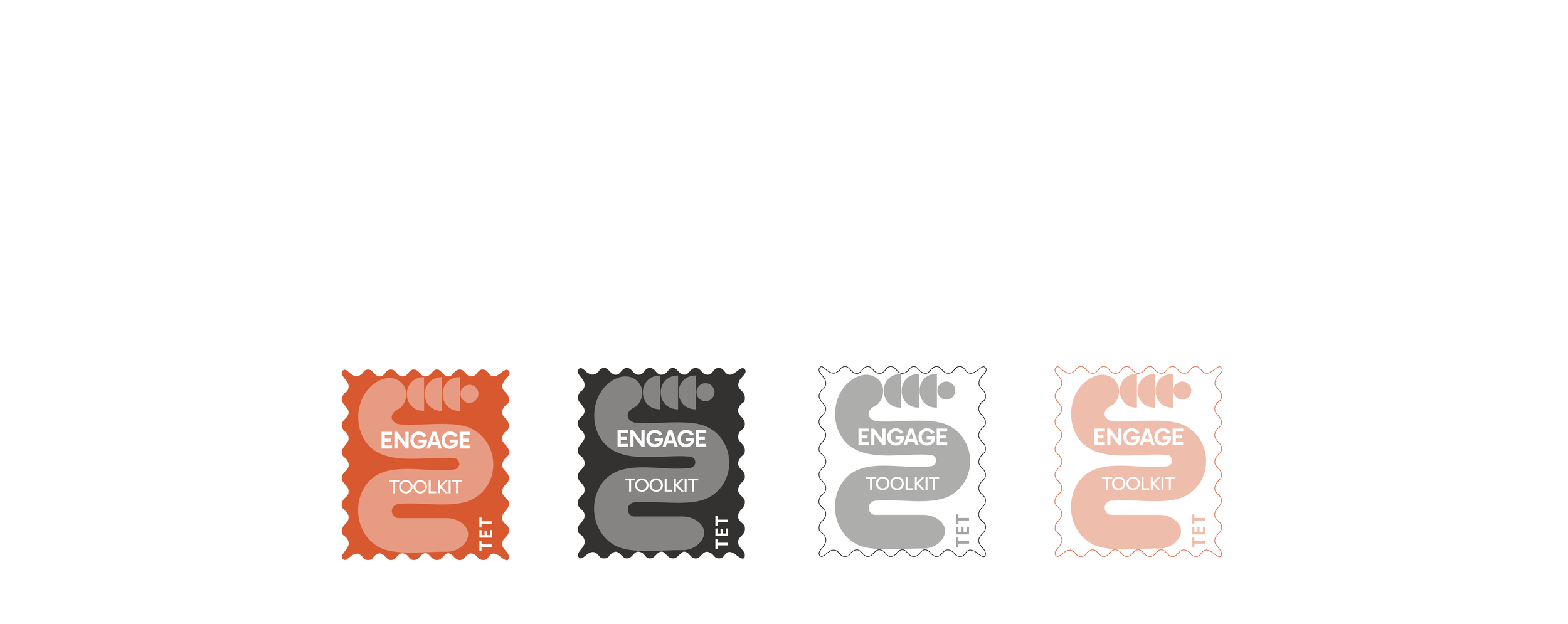
ENGAGE Toolkit
A guide for practitioners in meaningful engagement with children and young people (CYP) within the built environment.
This toolkit highlights the potential for fulfilling social value commitments through meaningful engagement with children and young people (CYP). It's a practical guide designed to bridge the gap, providing diverse methods to involve CYP in the built environment.
By showcasing examples of best practice and flexible outreach methods, the toolkit outlines the benefits that such outreach activity can bring to both CYP and your practice. We have included some practical tips, suggestions for adaptability and optimisation, allowing you to tailor the engagement strategies to your specific level of participation. Many of the examples are finalists and winners of TET’s Inspire Future Generation Awards 2021-2023. This toolkit is made possible through a grant from the Marchus Trust.
We hope it you find it a valuable resource making a positive impact for everyone!
Why engage with children and young people?
-

Introduce new possibilities
Engaging with children and young people enriches professional practice and the community by creating spaces for them to develop skills and interests. You offer a future they may not have known existed, extending beyond facilitating learning to helping them understand changes in their surroundings.
-

Contribute to your local community
Engaging with CYP initiatives allows practitioners to positively contribute to the local community. This reciprocal relationship benefits all parties, exposing practitioners to innovative ideas and perspectives. Collaborating with CYP builds trust and better relationships with local residents and authorities, showcasing a commitment to offering time and resources.
-

Staff Wellbeing and Career Satisfaction
Through outreach initiatives, architects witness the impactful and refreshing nature of these interactions, which extends beyond their routine tasks. This engagement offers a rewarding and fulfilling experience, distinct from the everyday role of a practitioner. There's tangible value in seeing the influence architects have on young minds.
-

Be a leading force in the industry
Recognising the value of engaging with CYP not only positions you for awards but also earns recognition for social value commitments. Dedication to inspiring and empowering the next generation boosts reputations and builds capabilities within teams and stakeholders. Positive profiling from engaging and outreach programmes can help procure future work, with rewards that may be intangible.
-

Social value benefit
Active involvement with CYP ensures the social success of initiatives. Children provide unique ideas and perspectives, offering creative feedback. Engaging with CYP cultivates a sense of belonging, enhances social value, and ensures that future users have a stake in creating sustainable and resilient neighbourhoods.
RIBA - why outreach with schools is a great way to demonstrate social value.
-

Develop essential skills in CYP
Engaging young people in the built environment is undeniably advantageous for children. It promotes the growth of both soft and hard skills, boosts self-confidence, develops leadership abilities, and instills a strengthened sense of ownership in their community. Through involvement with CYP, you equip them with the tools to express their opinions and become influential forces in their local environments.
-
"The satisfaction derived from witnessing the progress of the underrepresented young individuals we mentor has reinforced our commitment to enhancing representation within the field. Their experiences have driven us to continually adapt, expand, and improve our mentoring initiative, making it more effective and impactful. The initiative has not only altered the pathways of young individuals but also sparked a commitment to positive change within our team and extended network, promoting diversity and inclusivity as our core value."
Dhruv Gulabchande, Architect Narrative Practice

-
"We have found the process of engaging with the young people and TAG extremely rewarding. Not only have the young people gained new skills with regards to informing the built environment, but we have also learnt a valuable amount from them and been able to learn what engagement tools are more successful than others at working with young people. "
Sean Westion, Founder WR-AP
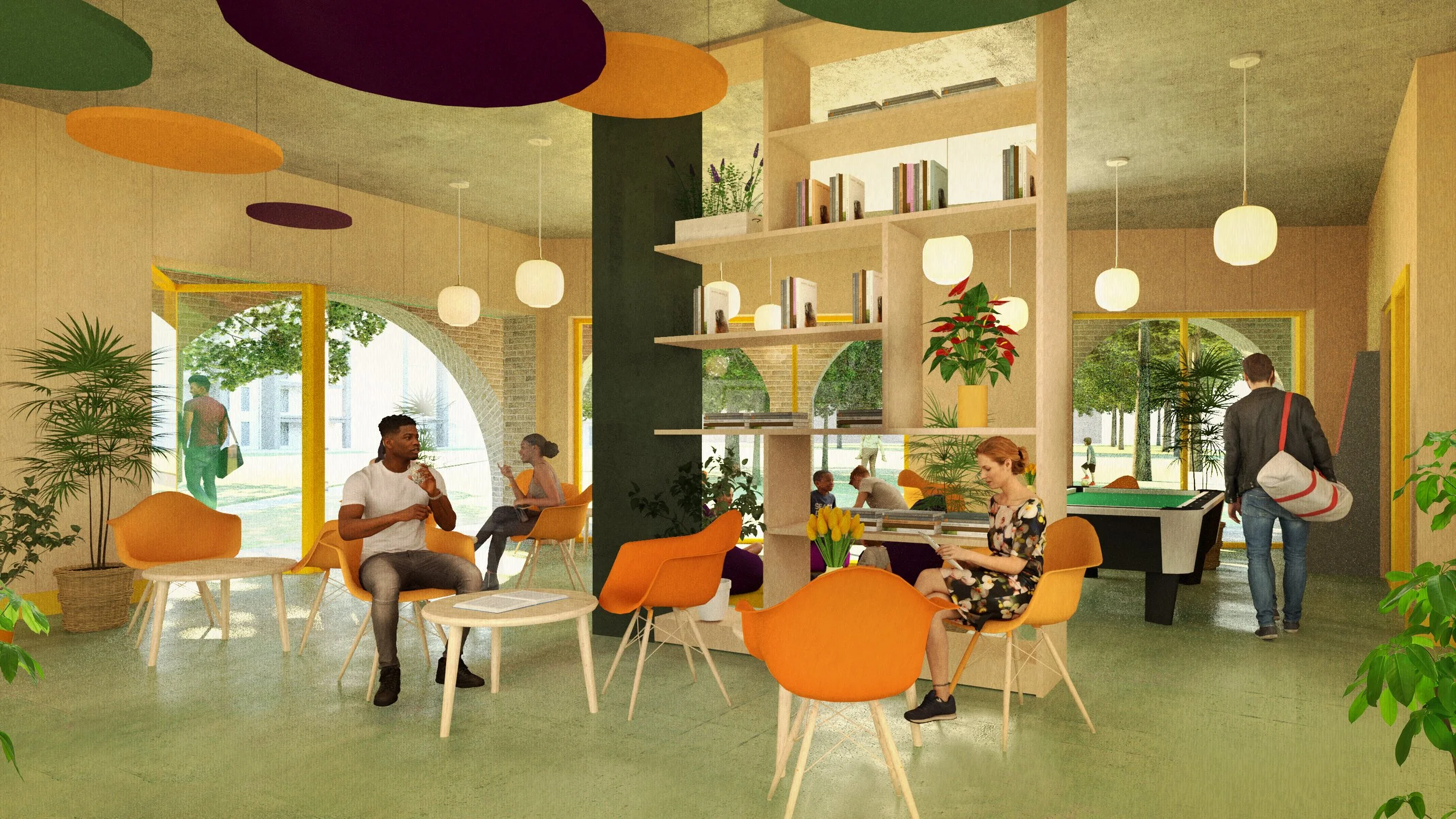
-
"Having been established as a long term collaboration with CANDI, working in the community is now part of the practice culture and all staff are encouraged to contribute with their expertise. For a number of staff that have engaged with the programme, it has been their first opportunities to speak in public and improve their communication skills. We have found that through our aim to demystify the profession, we have been to clarify to ourselves how we operate and encourage junior staff to be self- reflective about the process, something that is encouraged in career appraisals."
Ali Abbas, Associate and Outreach Co-ordinator, Stanton Williams
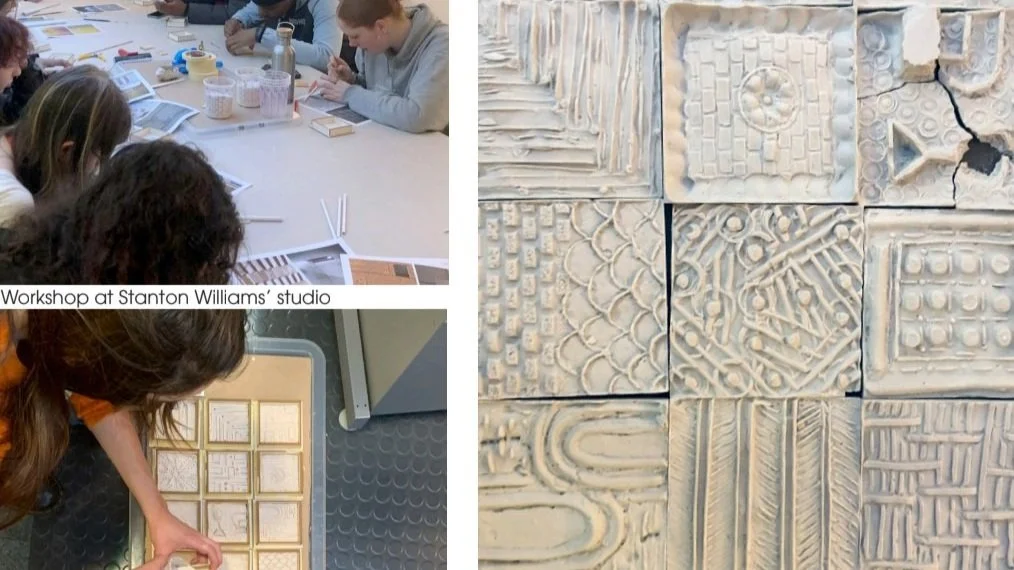
Approaches to Outreach and Engagement
In this section, various mechanisms for meaningful engagement with CYP are presented, drawing from examples in the Inspire Future Generations Awards Scheme.
These approaches are designed to be adaptable to practices' needs, schedules, availability, and budgets. Many of them require minimal commitment, making them accessible to all practitioners. Regular and ongoing interactions with CYP is helpful for maximising their effectiveness and impact.
Furthermore, practices are encouraged to consider providing opportunities for underrepresented communities within the built environment. This commitment to diversity and equity fosters a more inclusive built environment that reflects the needs and aspirations of all members of society.
Activities
Activities, in their various formats, provide an ideal platform for regular engagement with groups of CYP. Whether single or multi-day events, workshops offer immediate visual or educational outcomes, facilitating skill-based learning for CYP.
Mentoring
Mentoring provides an opportunity for critical reflection, space and time for looking at the individual in the context of their career and their value to the practice. It identifies the need for support and the opportunity to develop skills.
Competitions
Architecture competitions serve as an innovative and interactive platform for architecture firms to actively engage with children and young people, fostering a sense of curiosity, creativity and imagination within CYP.
Resources
Resources are activities, guides or databases that can be utilised by CYP, carers, teachers, architecture students aiming to provide comprehensive and accessible information, fostering a deeper understanding of architectural concepts.
Apprenticeships
Apprenticeships combines the practical experience from architectural practice with academic training from university. Work experience opportunities also provide insight into the everyday practices of industry for CYP of all ages.
Collaborations with not for profits
Many socially minded third-party organisations are dedicated to architectural outreach and education. Collaborating with organisations is valuable for knowledge sharing and training opportunities
Step by Step Stakeholder Engagement Resource Sheets
‘How to develop training workshops?
A number of organisations have devised a ‘step-by-step’ activity. This list, although not exhaustive, provides different type of examples from stakeholder engagement for planning through to community design.
Click here to see the list
“Any architecture practice can take our ‘how to’ guide and template for a two-hour creative session and use them to run a workshop in a school. There are 6,000 architecture practices in England. If each did one workshop every term with a local school, in a year that would provide creative education to 540,000 young people.”
Matt Bell from Heatherwick
Thornton Education Trust is currently developing a series of training workshops which will be available from the summer - both online or in-person. To obtain details signup below.
First steps…
-
Conduct a session with your staff introducing the concept of engaging with CYP, outlining benefits based on reasons above. Explore the level of interest within the team and determine the next steps.
This involves allocating an Outreach and Engagement Lead with suitable skills, capacity, and suitability to lead, facilitate, mentor and support engagement within the context of chosen project. One person or organisation should be designated as Engagement Lead.
Allocate preliminary budget and Engagement Programme, and ensure adequate time to engage and enable decision-making through all work stages
-
Evaluate the local landscape to determine if there is a CYP audience in the area, or determine the appropriate area to engage with CYP through desktop study.
Reach out to local schools, youth centers, libraries conducting CYP activities, RIBA branches, or residents' associations. Investigate whether your practice has established connections within these entities and build from there, if not this is a great opportunity to develop relations.
Review existing information from previous built environment engagement, consultation
-
Emphasise the importance of meaningful engagement by making your chosen initiative to be conducted on a regular basis. Tailor the frequency to the capacity that your practice can effectively manage, ensuring whichever form of engagement you decide to implement is sustained and impactful.
Considerations when engaging with CYP
Conduct DBS checks to safeguard the safety and well-being of children and young people, while also communicating with parents about the process.
Marketing and Promotion: Utilise your network for outreach and advertise events through local borough contacts, third-party networks, and newsletters.
Adaptability: Recognise the diversity among young people and adapt initiatives accordingly. Be innovative and open to creating new approaches. Be willing to adjust based on feedback and responses.
Tailor Your Approach: Customise your engagement approach based on the age group you're working with, offering appropriate activities and discussions.
Seek Feedback: Continuously seek feedback from children and young people to understand their experiences and preferences, and to improve outreach initiatives.
Inclusivity: Create an inclusive environment that respects diverse backgrounds, abilities, and experiences, while conducting activities ethically and respecting cultural identities.

